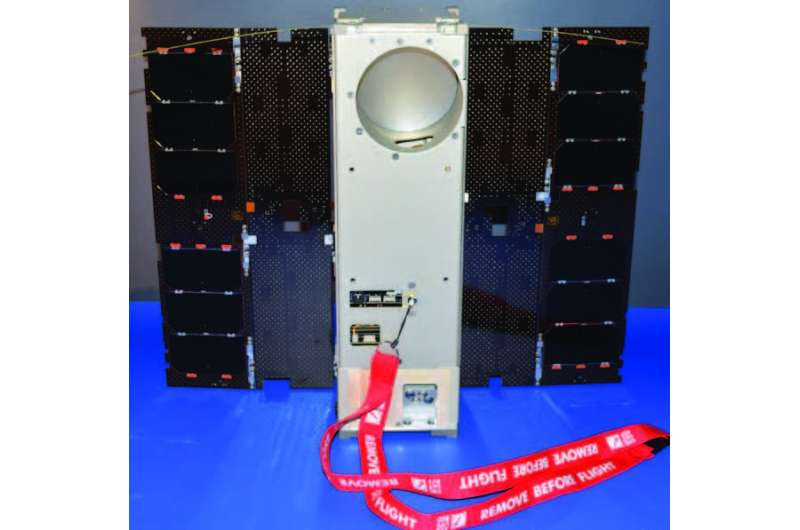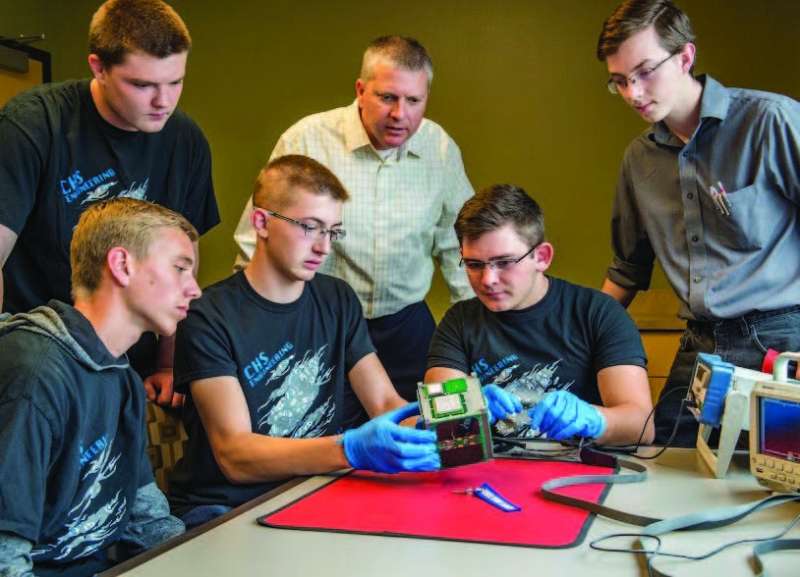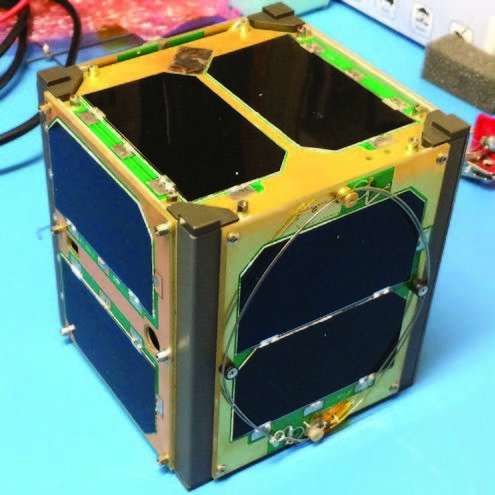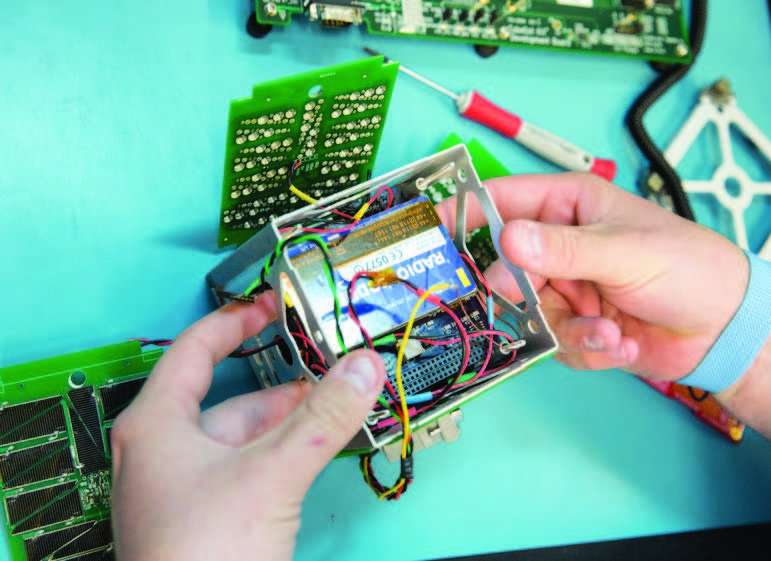ELaNa XIV CubeSats launch on JPSS-1 mission

NASA has launched four small research satellites, or CubeSats, developed by four universities as part of a broader mission launching the next generation polar-orbiting satellite to space. These CubeSat missions were selected through the CubeSat Launch Initiative (CSLI) as part of the 14th installment of the Educational Launch of Nanosatellites (ELaNa) missions. The ELaNa XIV mission is an auxiliary payload on the Joint Polar Satellite System (JPSS) mission, a collaborative effort between the National Oceanic and Atmospheric Administration (NOAA) and NASA. JPSS-1 lifted off Nov. 18, 2017 from Vandenberg Air Force Base in California at 1:47 a.m. PST (4:47 a.m. EST). Over the past four years, university students have been involved in the design, development and construction of the CubeSats that will be jettisoned into space from spring-loaded deployers.
CubeSats are playing an increasingly larger role in exploration, technology demonstrations, scientific research, and educational investigations at NASA. These miniature satellites provide a low-cost platform for NASA missions, including planetary space exploration; Earth observation; fundamental Earth and space science; and technology demonstrations such as cutting-edge laser communications, energy storage, in-space propulsion, and autonomous movement capabilities. They also provide educators an inexpensive means to engage students in all phases of satellite development, operation, and exploitation through real-world, hands-on research and development experience on NASA-funded ride-share launch opportunities.
CSLI enables the launch of CubeSat projects designed, built, and operated by students, teachers, and faculty, as well as NASA centers and nonprofit organizations. Managed by the Launch Services Program at NASA's Kennedy Space Center in Florida, ELaNa missions provide a deployment opportunity or ride-share launch to space for the CubeSats selected through CSLI. ELaNa mission managers and their teams engage schools and colleges across the United States, providing spaceflight education through the preparation of payloads (licensing, integration and testing) flown in space. Since its inception in 2010, the initiative has selected more than 150 CubeSats and launched 49 CubeSats primarily developed by educational and government institutions across the United States. These miniature satellites were prioritized and selected through a formal NASA review of proposals submitted in response to CSLI announcements. NASA announced another call for proposals in early August 2017.
Basic CubeSat Facts:
- Built to standard dimensions of 1 unit (1U) which is equal to 10x10x10 cm
- Can be 1U, 2U, 3U or 6U in size
- Weigh less than 3 lbs (1.33 kg) per U – 6U may be up to 6.3 lbs (14 kg)

CubeSat deployment
Four CubeSat projects were selected for the ELaNa XIV mission. The CubeSats are placed inside Poly-Picosatellite Orbital Deployers (P-PODs) which are then integrated onto a Delta II rocket that will ferry them to space. The P-POD was designed and manufactured by the California Polytechnic State University of San Luis Obispo, California. After the main payload deploys, the CubeSats will separate from their P-PODs. After 45 minutes in orbit, each CubeSat's transmitters will turn on. The Cubesat teams utilize ground stations to listen for their beacons to determine their small satellite's functionality and operational status.
CubeSat missions are anticipated to last at least 90 days, although durations may vary. Upon mission completion, the CubeSats begin a final fall through Earth's atmosphere, where tremendous heat generated by friction causes them to disintegrate.
Safety and mission assurance
Each CubeSat developer has verified their satellite is compliant with the P-POD requirements. NASA conducts a joint mission readiness review with each CubeSat developer. Each ELaNa CubeSat complies with U.S. and NASA orbital debris mitigation standard practices.

The CubeSats
MiRaTA—Microwave Radiometer Technology Acceleration
Massachusetts Institute of Technology – Cambridge, Massachusetts
MiRaTA is an atmospheric sensing CubeSat that measures temperature, water vapor, and cloud ice in the atmosphere for severe weather monitoring and the study of cyclone structure. MiRaTA will flight test a new ultra compact, low power radiometer as well as a new GPS radio occultation (GPS RO) receiver and patch antenna array. The two instruments will work together to demonstrate, for the first time, radiometer calibration methods using co-located GPS RO measurements. This technology will enable low-cost weather imaging constellations with significantly improved temporal resolution spatial coverage that can dramatically enhance the capabilities of future weather and climate sensing architectures. MiRaTA is sponsored by NASA's Earth Science Technology Office under the In-Space Validation of Earth Science Technologies (InVEST) Program. The MiRaTA team includes MIT, MIT Lincoln Laboratory, The Aerospace Corporation, the University of Massachusetts Amherst, and the Space Dynamics Laboratory.
MakerSat-0
Northwest Nazarene University – Nampa, Idaho

MakerSat-0 is a technology proof-of-concept mission that is supporting up to four science payloads developed by independent teams. During the MakerSat-0 mission, one university science team will measure the mass loss of several additive-manufactured polymers in orbit. The materials are expected to undergo mass loss due to monoatomic oxygen radicals, ultraviolet (UV) radiation, ionizing radiation, and outgassing. A high school science team payload will also be flown. The MakerSat concept will be demonstrated with two launches: MakerSat-0 will be conducted through the ELaNa XIV program in preparation for the eventual printing, assembly and launch of MakerSat-1 from the space station. MakerSat: engineering.nnu.edu/research/makersat/
RadFxSat
AMSAT, The Radio Amateur Satellite Corporation – Silver Springs, Maryland
Vanderbilt University – Nashville, Tennessee
RadFxSat is a technology demonstration mission to monitor ionizing radiation effects in a memory integrated circuit. The memory, fabricated in a commercial 28 nm complementary metal-oxide-semiconductor (CMOS) process, supports a low-power sleep mode and will be used to compare the rate of radiation-induced bit errors between reduced and full-power states. The payload builds upon AO-85 (Fox-1A), the first of AMSAT's series of 1U CubeSats that was launched as part of ELaNa XII in 2015, with the goal of assessing and improving the reliability of commercial microelectronics for space applications.
EagleSat-1
Embry-Riddle Aeronautical University – Prescott, Arizona
EagleSat-1 is a scientific investigation that will attempt to measure the decay of the satellite's orbit over time by the means of an unlocked Global Positioning System (GPS) receiver in the space environment. The primary experiment will concern the use of supercapacitors for the battery bank. The satellite is composed of structures, power, communications, GPS experiment, and onboard computer (OBC) subsystems. The radio transmitter within the satellite has been donated by Wood & Douglas, part of the Ultra Electronics group in the United Kingdom.
EagleSat: prescott.erau.edu/about/labs/axfab-eaglesat/
Provided by NASA





















